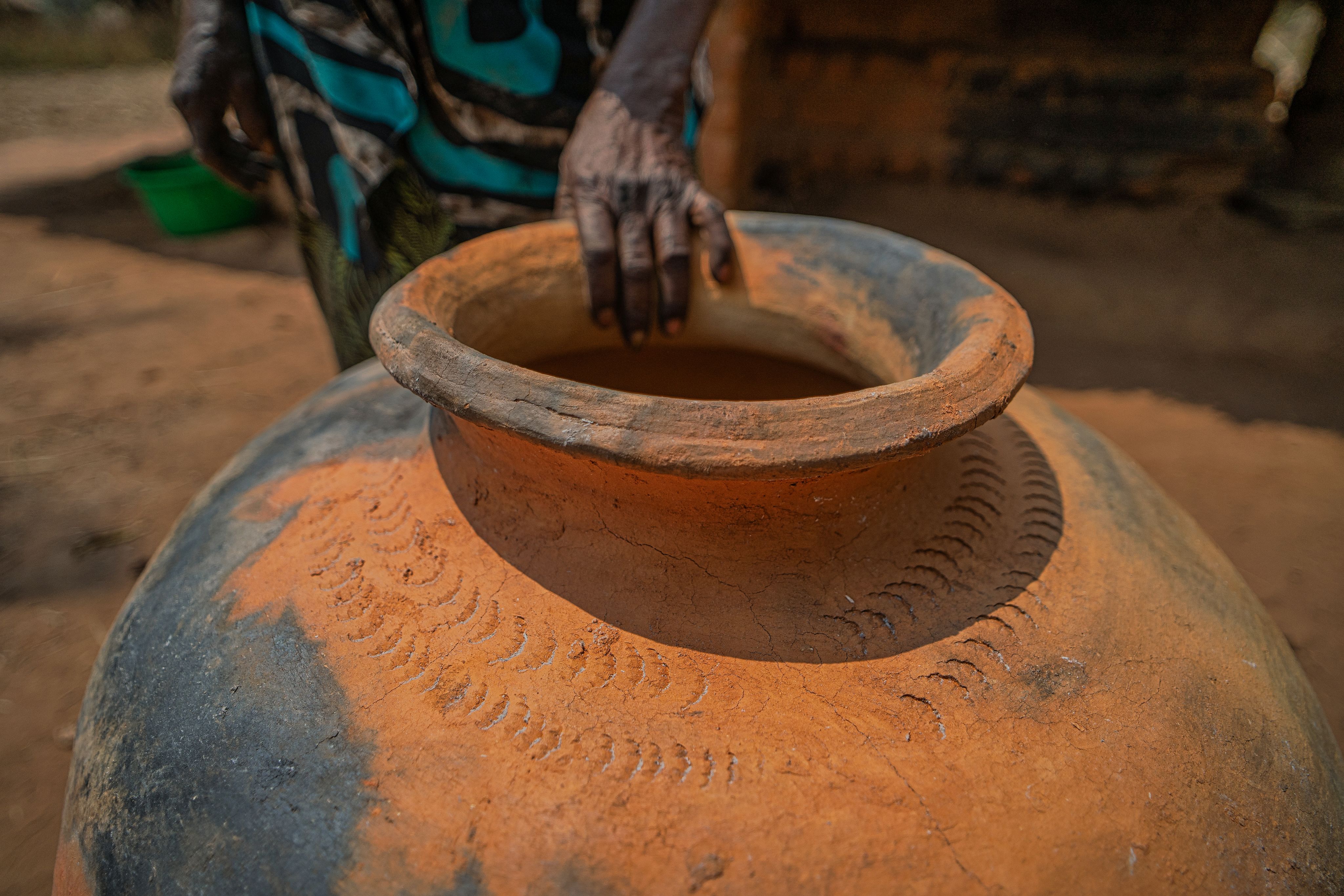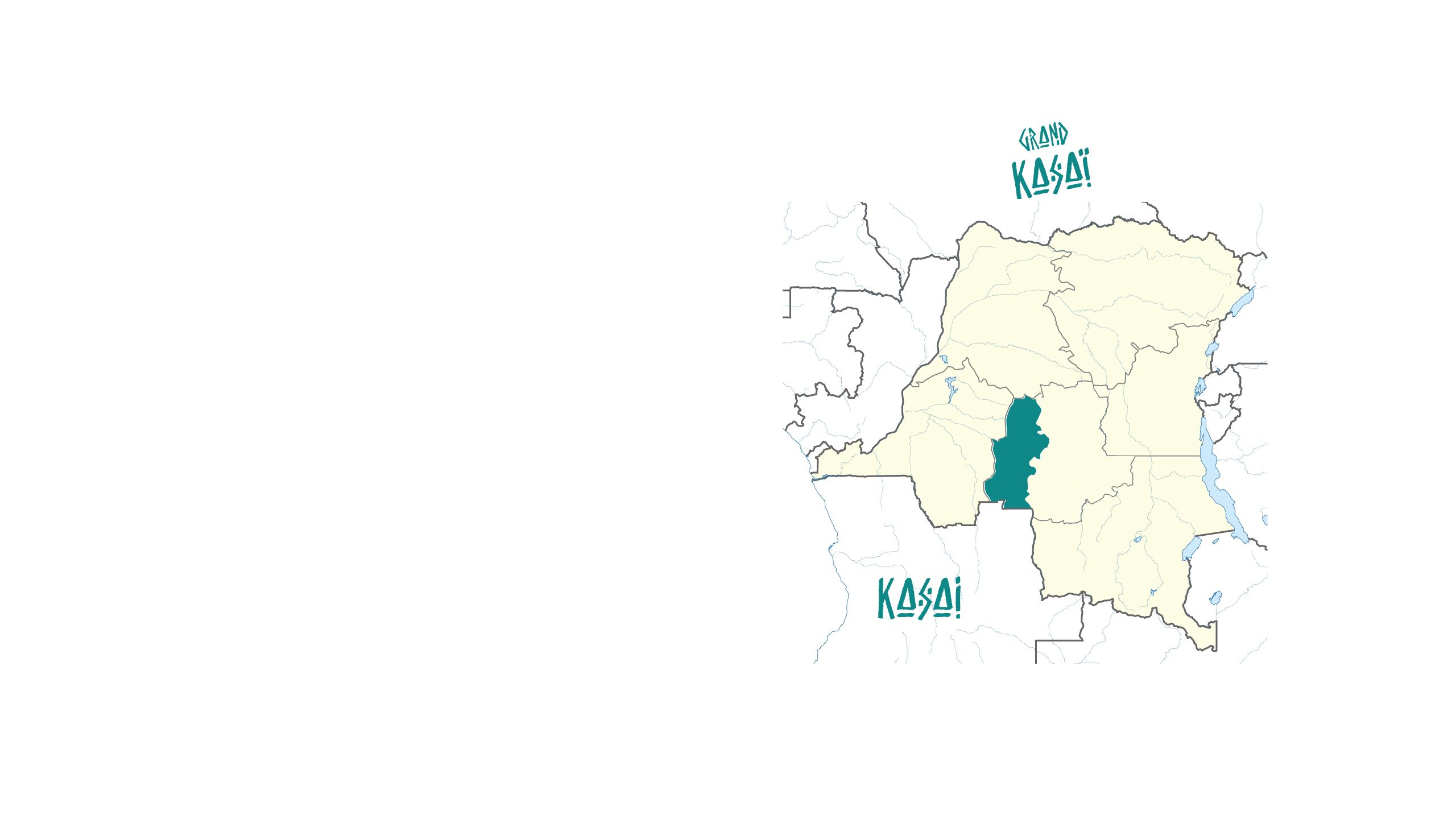Congo's Ecological Coolers

In the sweltering heat of the savannah
in the Democratic Republic of Congo,
temperatures can reach up to 36°C 🌡️





In rural communities, there is little escape from the heat but people have developed adaptability and resilience.
The population depends on agriculture.
Farmers often work tirelessly under a scorching sun.
The most precious drink in the heat is chilled water.
Bena Mulamba is a small rural community of one hundred people in Kasai, in central Democratic Republic of Congo.
“Some people who come here for the first time are often surprised when we offer them [chilled drinking] water,” according to Remy Tshibangu, the patriarch of the community.
“They sometimes look at us strangely and then always ask if we have a fridge in the house, even though they know it's impossible because we don't have electricity.”

Nyingu
The chilled drinking water comes from hand-made clay pots—called Nyingu in Tshiluba, the local language of DRC's Kasaï region.
For generations, people in hot climate regions worldwide have used terracotta (or baked earth) pots to cool and store drinking water. Terracotta pots are effective coolers because the clay absorbs the heat of the water.

In the Bena Mulamba community, women source clay from soils along the banks of the nearby Kalulu river.
“The rainy season is the most challenging time for us. That's when we struggle to work properly because water often floods the places where we collect clay.”


The Kasaï is a region in the central Democratic Republic of the Congo which shares its name with the Kasaï River, a tributary of the Congo River.
Since 2015, the Kasaï is divided into five provinces:
Kasaï
Kasaï-Oriental
Kasaï-Central
Lowami
Sankuru





Climate Data
In the Democratic Republic of the Congo, the average temperature has steadily increased by nearly 1.5°C since 1961, a year after the country gained its independence from Belgium. It is unknown whether this is a natural or irregular increase caused by human-induced climate change.
Human-induced climate change is caused by emissions of greenhouse gases from human activity. But the DRC has one of the smallest carbon footprints in the world. Historically, the DRC's emissions of carbon dioxide (CO2) have remained so negligible that they are not visible on the global scale.
DRC is one of the countries in Africa with the foremost abundance of rainfall: at least 13 millimeters of rainfall over a rolling 31-day period with the rainy season lasting 8 to 9 months out of the year.
However, the conservation and storage of clean water are a major challenge in different regions of the DRC.
The lack of adequate water storage infrastructure limits the ability of the population to preserve this precious resource. The clay jars thus play a crucial role in storing large quantities of water for households.

Master Potter
Nzeba Assy is 65 years old and is recognized as the best artisan in the Bena Mulamba community.
For the female artisans, pottery is a family tradition. “The secrets of making clay drinking water pots have been passed down to us by our mothers and grandmothers,” said Nzeba.
Female potters such as Assy are now the keepers of an ancestral craft which is fading in many other communities. “Within the great chieftaincy of Bakwa Mulumba, we are the last keepers of this ancestral art.”
With unmatched expertise, Assy is capable of precisely creating a large clay pot that can hold over 150 liters of water. Kabedi Kalonji, another 60-year-old pottery master fondly remembers crafting a clay pot that could hold over 200 liters of water.
“The secrets of making clay drinking water pots have been passed down to us by our mothers and grandmothers”
Assy has been making and selling clay drinking water pots for over 20 years, just like the other female artisans of Bena Mulamba. It is their main source of income, which has allowed them to raise their children and even some of their grandchildren.
“It is a precious heritage that allows us to support our community and meet our needs." She also crafts small kitchen utensils, vases used as cooking pots, water baskets, and much more.
Assy is deeply attached to clay drinking water pots and prefers these traditional utensils over modern plastic products.
"Why buy plastic when we can get everything for free by working with clay? For years, I have been cooking with my small clay pots that I make myself. I see no reason to change.”
She shared that she once sold a small vase to European tourists, and that it brought her to the realization that her creations had artistic value and that there is no reason to envy imported utensils.



Clay drinking water pots are an essential element of daily life in the Ngandajika territory, present in nearly 90% of households. Their value is so great that some residents cannot imagine moving without taking them along. "I am in the process of moving to another village. I can leave behind other furniture, but never my clay drinking water pot,” shared Maman Christine from Bena Kalula. “It is my fridge, my water reservoir.”
“It is my fridge, my water reservoir.”

At the Muzewu market, which is open twice a week on Thursdays and Sundays, the clay drinking water pots from Bena Mulamba are a sensation. Women from surrounding villages come to buy them, and the price of a clay drinking water pot varies between five thousand Congolese francs ($2) for a small size and twelve thousand Congolese francs ($5) for a large size. These works of art are not as expensive as one might think. They are affordable, and the artisans sell them with joy.
Furthermore, in the local markets of the region, there are also women selling chilled drinking water in these clay pots. Since the markets are only open once or twice a week, they attract a considerable crowd of merchants and buyers from all the surrounding villages. These women who sell chilled drinking water in the clay pots sell a cup of water for fifty or one hundred Congolese francs (less than $1).



Selling chilled water from clay drinking water pots is very ecological.
In the big cities in the country, chilled drinking water is typically sold in the streets in clear plastic bags called sachets.
Improperly discarded sachets are one of the main causes of unsanitary conditions and urban pollution.
The making of clay drinking water pots
The production of clay pots in Bena Mulamba is an artisanal process that involves several stages, from collecting raw materials to finishing the pieces.
Collection of construction materials
The first step is to collect special clay along the river. Laterite rocks are another key material. Artisans break rocks into finer particles, which are then mixed with clay to form the adequate texture of molding clay.
Clay shaping
The second step is shaping the clay. Local artisans shape clay cylinders to create small pottery pieces that will later be assembled with other cylinders to form a single large water pot. This manufacturing process showcases the patience and precision required to produce unique and original pieces.
Clay firing
The third step is firing the clay. After shaping the vessels, they are dried and fired in a traditional kiln. This process is crucial to ensure the strength of the final pot and bring out all the nuances of the clay's color used in the creation. After firing and cooling, the pots are ready for finishing.
Decoration
The final step is decorating the clay pots. Artisans use a natural dye made from seeds to add a colorful touch to the pots once they have been fired. This final touch adds an additional aesthetic dimension to the finished pot.
Text, Photography & Drone Videography : Ruben Nyanguila Kapiamba
Design: Exaucé Yanga
Commissioned & Edited by Mohamed Keita



